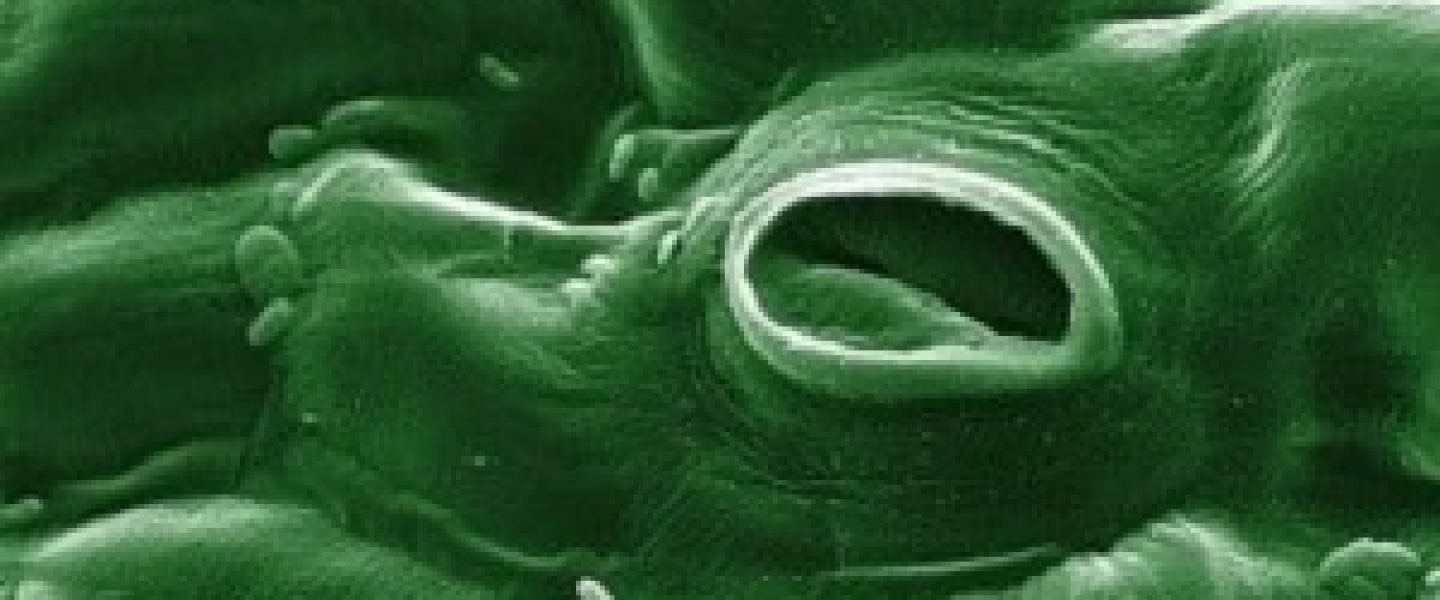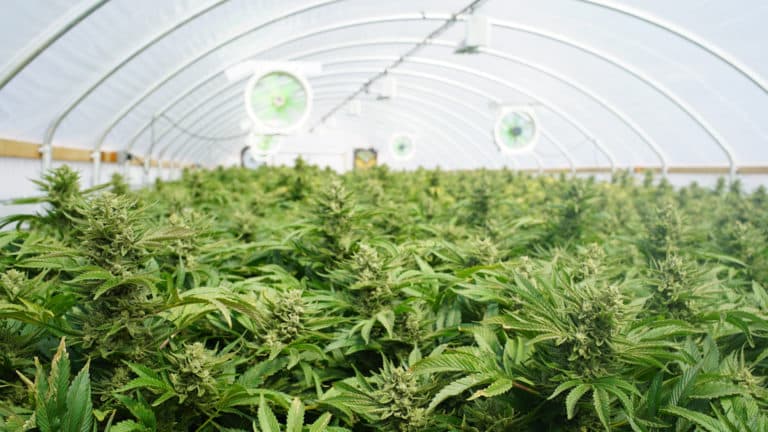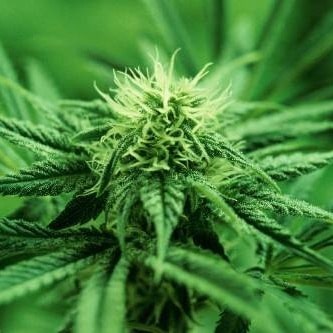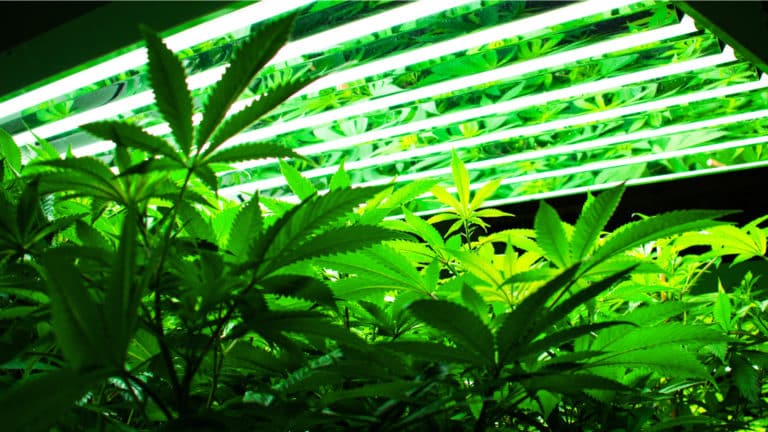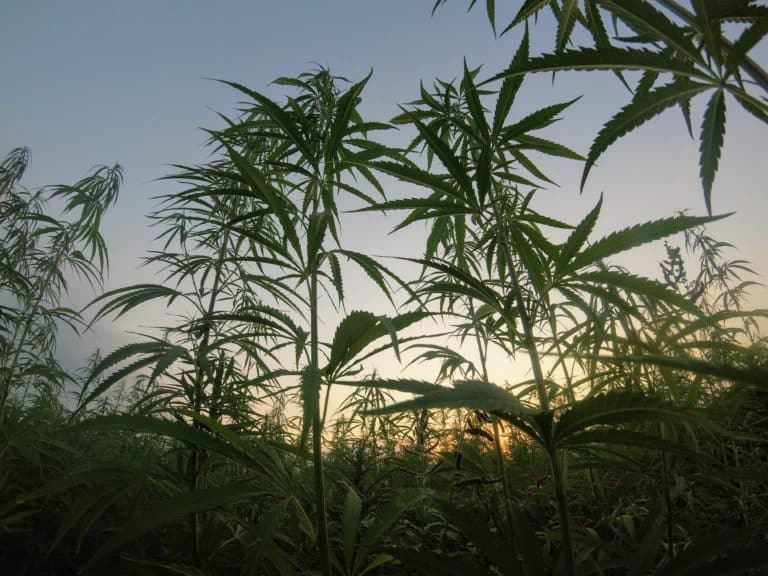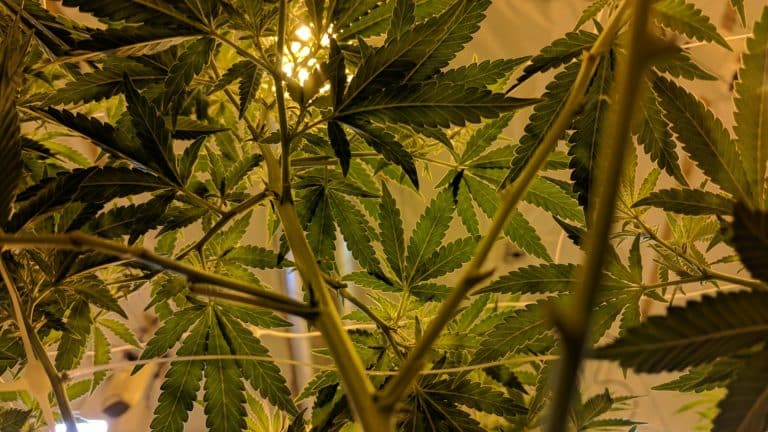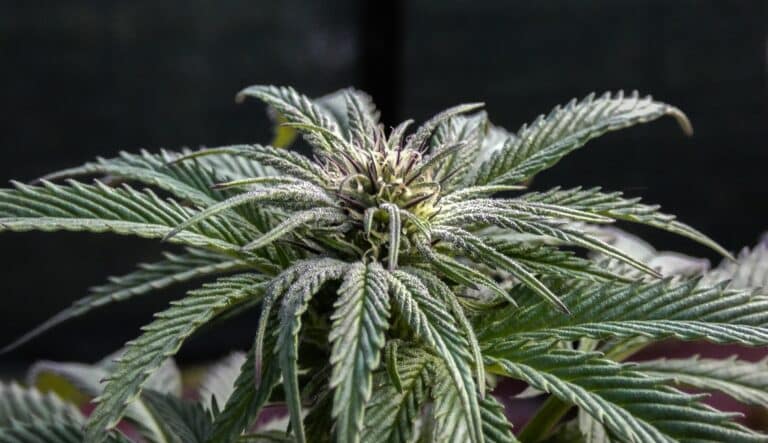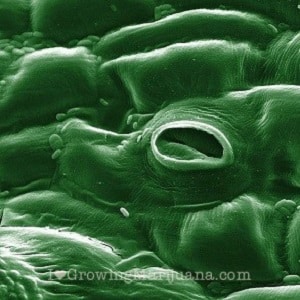 Stomata are tiny holes that cover the underside of the marijuana leaf. These stomata are microscopic and must be magnified by a lens to be seen. They are the part of the plant that takes in CO2, while releasing water and oxygen.
Stomata are tiny holes that cover the underside of the marijuana leaf. These stomata are microscopic and must be magnified by a lens to be seen. They are the part of the plant that takes in CO2, while releasing water and oxygen.
Plants use a cleverly engineered vacuum system for opening and closing the stomata, which are vital because they are a foundational part of the plant’s growth.
When you adjust the stimuli in a plant’s environment, you concurrently adjust the position of the stomata. So, in order to grow the highest quality cannabis, it’s vital to understand the processes by which the plant itself functions.
Exactly What are Stomata
Stomata are the door and windows of the leaves. They are organs that absorb CO2, releasing oxygen and water. Ideally, it is best for stomata to absorb as much CO2 as possible, to facilitate photosynthesis.
On the other hand, if the stomata remain open for too long, the plant will suffer from a loss of moisture. Since stomata must be either open or closed, the plant is constantly walking a knife’s edge between moisture loss and CO2 absorption. This balance depends on the environment and the health of the plant. By adjusting the environment, you can influence the opening and closing of the stomata.
How do the Stomata Function
Stomata (singular: stoma) are tiny holes on the undersides of leaves. The hole is made up of twin guard cells and auxiliary cells.
The guard cells are what allows the stoma to open and close: they can absorb or release water to change their size, effectively closing or opening, depending on the plant’s needs. This process of absorption is called osmosis, when a liquid with a lower concentration of dissolved solids travels across a membrane to a region with a higher concentration of dissolved solids. So, guard cells build up dissolved solids in order to be able to absorb water. Primarily they utilize potassium and sugars.
There are also channels in the guard cell for attracting potassium, which it gathers through the auxiliary cells. The absorption of water is faster than the second process, meaning that plants can close stomata more quickly than they can be opened. A hormone called abscisic acid sends the signal to close the stomata. This hormone is generated when the plant itself is in a state of low moisture.
Bear in mind that open stomata are not picky about what they absorb. In addition to CO2, water, and oxygen, other harmful gases like carbon monoxide and ethylene can pass through the membranes.
Stomata Responses to Climate
Stomata operate in their own solar cycles, not so different from our own circadian rhythms. During the day, they open while at night they close to retain moisture.
They can also be affected by a variety of other stimuli: the intensity of the light, the concentration of CO2, and the humidity. For more tips on plant physiology, be sure to download my free marijuana grow bible.
New research indicates that the cyclical opening and closing mechanism of the stomata is a complex process affected by many stimuli. The system is sophisticated, and features many guards to aid the plant in protecting itself. This should come as no surprise since if something goes wrong with this foundational system, the plant will be unable to grow or survive.
Botanical research has compared the flexible systems of the plant to the processes of the brain in which new components can help fill in for lost functions. If one part of the plant fails, another part of the plant will take over.
Stomata responses to CO2 and Light Intensity
The size of the stomata opening is dependent on the intensity of the light. The more light, the larger the opening. The process is chemical, however. Intense light decreases the CO2 concentration in a leaf, and once the CO2 disappears, the guard cells are signaled to open and absorb more.
The plant will attempt to maintain a balance between external CO2 and internal CO2. Unfortunately, a lot of external CO2 will lead to smaller stomata openings, which can cause the leaves to overheat and turn yellow. This is why airflow is important: cooling the plant can help prevent this. CO2 levels of around 1500 ppm are optimum for CO2 absorption.
Controlling Stomata with Cannabis Grow Lights
Interestingly enough, the spectrum of light absorbed also strongly affects stomata reactions. The blue end of the spectrum is more effective than the red. Stomata open the most when exposed to blue light. Be careful with this, however: this might make it seem that you can use colored LEDs to manipulate the mechanisms of the stomata. Don’t do it! The plant’s optimization system is carefully balanced, and you don’t want to radically overturn the ratio of CO2 absorption and water loss. HPI and HPS lamps are still the ideal choices of lighting for indoor growers.
Moisture and Stomata
A plant’s response to moisture levels is a complex interplay between its internal moisture levels and those of the environment around it. This means all the water absorbed through the roots and evaporated through the leaves all comes into play.
When a plant is low on water (internal moisture), the stomata will close. Even though this means photosynthesis is interrupted, it can save a plant from drying out and dying. More detrimental than the lack of CO2 is the temperature of the plant. The stomata are how the plant cools itself, and when they close, the leaves get hotter, which causes further evaporation (some water can escape even when stomata are closed). This cycles right back to the low internal moisture.
To go even one step further, this inhibited evaporation and cooling means that the humidity of the air in the plants environment will begin to drop. Thus, an even greater disparity will grow between the humidity in the room and the internal moisture of the plant. Eventually, this cycle will prevent the plant from saving as much water as one might expect.
Curiously enough, researchers at the University of Wageningen in the Netherlands have found that plants exposed to a constantly high humidity have no need to close their stomata. There is no danger of moisture loss in this environment. But plants still have no adaptation for this, likely due to their evolution in arid climates. This offers an important reminder: plants cannot always respond properly to a stressful environment. Don’t forget to take care of your plants!
Learning about the stomata is important, but that’s just one piece of the puzzle. Many factors figure into successful cultivation and growth. It’s very important to understand the parts of the plant and the processes they go through. For more tips on plant physiology, be sure to download my free marijuana grow bible for a handy offline source.


